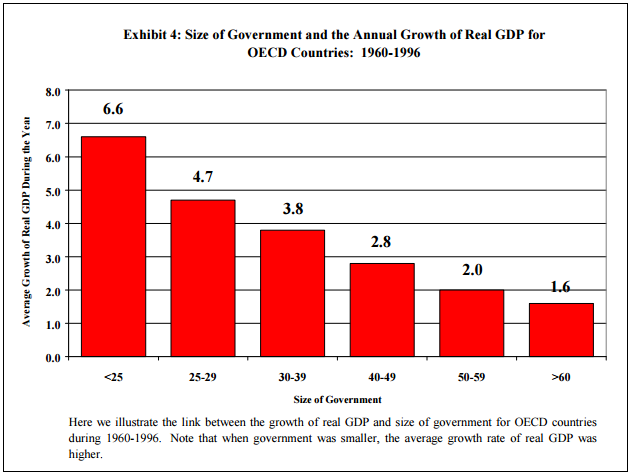During his speech at the Regional Employment Conference, the Prime Minister of Georgia, Irakli Gharibashvili, stated that according to the data of the second quarter of 2015, employment in the business sector increased by about 61 thousand which is a 12% growth as compared to the same period of the previous year.
FactCheckverified the accuracy of the Prime Minister’s statement.
According to the National Statistics Office of Georgia’s data, a total of 568,457 people were employed in the business sector in the second quarter of 2015 which is 60,847 (12%) more than in the same period of 2014. The largest number of individuals at 139 thousand was employed in trade whilst industry holds the second place with 108 thousand employed individuals.
We also used some indirect ways to check the number of those employed in the business sector. All employed individuals, excluding those self-employed, (with only a few exceptions) pay income tax on their wages. We requested statistics from the Revenue Service of Georgia concerning the number of individuals receiving wages.
Table 1:
Number of Individuals Receiving Wages (Last Month of Each Quarter)
| Quarter | 2012 | 2013 | 2014 | 2015 |
| I (March) | - | 775,923 | 822,106 | 849,435 |
| II (June) | 943,235 | 783,979 | 867,543 | 851,441 |
| III (September) | 758,267 | 789,811 | 847,396 | 849,047 |
| IV (December) | 813,848 | 915,019 | 979,463 | - |
As Table 1 makes clear, the number of individuals paying income tax on their wages at the end of the second quarter of 2015 (June) equalled 851,441 which is 16,102 less than in the same period of the previous year. According to the National Statistics Office of Georgia, even though the number of those employed in the business sector increased by 61,000, the overall number of the country’s employed decreased by 16,000. The difference between the National Statistics Office of Georgia and the Revenue Service of Georgia’s data is about 77,000 people (60,847 + 16,102).
We tried to explain the reasons for such a difference between the National Statistics Office of Georgia and the Revenue Service of Georgia’s employment figures. The possible reasons are the following:
- Business sector statistics published by the National Statistics Office of Georgia include self-employed individuals (who do not pay income tax) and those hired (who do pay income tax). According to the National Statistics Office of Georgia, the number of individuals hired by businesses in the second quarter of 2015 was 547,665 people whilst this number was down to 491,098 in the second quarter of 2014. Hence, the number of hirings increased by 56,567 people.
- The National Statistics Office of Georgia’s data include only those employed in businesses (excluding the financial sector). They do not include those employed in government structures, markets and retail trade, non-commercial entities and legal entities of public law. The number of individuals employed in the public sector in 2015 did not drop as compared to 2014. The number of employees within large employers of the public sector such as public schools, universities, libraries, theatres and so on has also not decreased to any significant extent. Hence, suggesting that the growth of employees in the business sector was balanced with the decrease in workplaces in other sectors would not be correct.
- The Revenue Service of Georgia’s data show the number of individuals who received their wages in June 2014 and 2015 (end of the second quarter) whilst the information provided by the National Statistics Office of Georgia show the overall number of those employed from April to June. For example, if someone had a job in April and May but did not work in June, he would be included in the National Statistics Office of Georgia’s data but be excluded from those of the Revenue Service of Georgia. Hence, if the number of individuals temporarily employed (one or two months) was high in the second quarter of 2015, it would serve as one of the factors for explaining the aforementioned differences between the data.
On 4 December 2015, the National Statistics Office of Georgia also published employment data of the third quarter of 2015. The number of employed individuals increased by 48,400 as compared to the third quarter of 2014. According to the Revenue Service of Georgia, however, only 1,650 more people received wages in September 2015 than in September 2014. The data of the third quarter also indicate that the growth of the number of employed individuals in the previous quarter was the result of those with temporary employment as the number of more stable workplaces increases at a much slower rate.
Chart 1 shows the correlation between Georgia’s economic growth rate and the growth of the number of individuals employed in the business sector. A logical connection between these two can be seen from 2012 to 2014 whilst there were significant differences between the economic growth rate and the growth of employment from 2005 to 2011. For example, in 2006 the Georgian economy grew by 9.4% whilst employment in the business sector dropped by 7.2%. The economy decreased by 3.7% in 2009 whilst the number of employed individuals increased by 10.9%.
Chart 1:
Number of Individuals Employed in the Public Sector and Georgia’s Economic Growth Rate
 Source: National Statistics Office of Georgia
Source: National Statistics Office of Georgia
FactCheck
addressed some economists and representatives of political parties asking them to comment upon the issue of employment. Here are their comments:
Roman Gotsiridze: "When the economy grows at such a slow pace, it is almost impossible for the number of those employed in the business sector to increase. Many people lost their jobs because of the depreciation of GEL. Small and medium businesses were especially hit by the depreciation. Many businesses were simply closed down whilst, in other cases, the number of employed people drastically decreased. This is supplemented by a drop in imports and exports which directly means a drop in workplaces. The National Statistics Office of Georgia’s methodology has not been reviewed for a long time. The data published in the past few years are doubtful and do not seem real as external factors show a different picture. I would not exclude that the National Statistics Office is under political influence."
Demur Giorkhelidze: "I personally would not be able to identify those sectors where these additional 61,000 workplaces were created. In order to definitively comment upon whether or not these data are real, we must have each sector’s monthly employment statistics. Given the depreciation of GEL and the low economic growth rate, small and medium businesses, which should be the ones creating the workplaces, are not moving forward. Money is not available to them. Given all of these factors, we suddenly have these kinds of data. This, of course, raises some questions."
Levan Kalandadze: "In his statement, the Prime Minister meant that these 61,000 people were employed in terms of government programmes which included the cheap loan project and the creation of 100 enterprises. This is theoretically possible. If we want to check this number, we will need to know how many people were employed in these enterprises. It is possible that a certain number of small and medium businesses are closing down but we do not know how many of them are being set up. Hence, we cannot say that a lot of businesses have closed down."
Giga Bedineishvili: "Today, we have a low economic growth rate. Even if we had a high growth rate, unemployment in Georgia has always been an issue as it is a structural problem. In Georgia, even if a person has specific education and a diploma, he is sometimes unable to find a job relevant to his education and skills. Such a high growth of the number of those employed in the business sector was not recorded even in the year when the economy was growing much faster. Hence, these numbers are not very convincing to me."
Vasil Revishvili (Free Democrats): "We could assume that these numbers reflect seasonal jobs. For example, a significant construction project was going on near Tbilisi Sea where, of course, a lot of people were employed. However, this does not mean that the number of those employed in Georgia’s business sector is actually on the rise. If these were the actual numbers, Georgia’s unemployment rate should have dropped to at least 9%. It could also be that the methodology of counting employed people has changed. This means that those who were not considered to be employed in the business sector are now included in this category."
Zurab Japaridze (New Political Centre – Girchi): "These data are not real as the economy today is at a standstill. It has been more than a year that exports and imports are decreasing. Given this, these kinds of numbers are a lie. I believe that the data are falsified as other economic indicators show a different picture."
Mikheil Machavariani and Zurab Melikishvili (United National Movement): "We do not think that the data are wrong as the methodology has not been changed. It should also be pointed out that the growth of the number of employed individuals is as compared to the second quarter of 2014. In 2015, the second quarter is 22,000 as compared to the first quarter of the year. The growth of the number of employed individuals as stated by the Prime Minister is due to one-off events. Specifically, the government intensified the preparatory work for the Tbilisi Youth Olympic Festival – companies went to 24-hour workdays and had to hire more people in order to finalise their work before July. In addition, preparatory work for the EBRD’s (European Bank for Reconstruction and Development) annual meeting took place and the National Statistics Office of Georgia included the data provided by the participating companies in its statistics, including even those people who were hired for a day or even half-a-day which, therefore, resulted in a big difference in the data. Even though 2015’s economic growth rate is quite low, theoretically, the number of employed individuals should have increased; however, not this much. The growth in the number of employed individuals appeared because of those one-off jobs. This fact also shows that the economic growth rate and the employment growth rate are not in direct correlation."
Conclusion
According to the National Statistics Office of Georgia’s data, the number of individuals employed in the business sector increased by 60,847 people (12%) in the second quarter of 2015 as compared to the same period of the previous year whilst in the third quarter of 2015 the growth was 48,400 people (9.3%) as compared to the same period of 2014.
FactChecklooked into the number of employed individuals using the Revenue Service of Georgia’s data as well. The number of individuals paying income tax on their wages (the number of hired individuals) in June 2015 was 16,102 people less than in the same month of 2014. Despite the fact that the Revenue Service of Georgia’s data also include the numbers of those individuals employed in the non-commercial sector, the public sector and non-governmental organisations, this still does not fully explain the 77,000 difference. If the number of those receiving wages drops parallel to a significant growth in the number of those employed in the business sector, we either have a sharp decrease in employment in other sectors of the economy or a very high share of temporarily-employed people in the business sector itself.
We also addressed some economists and representatives of political parties asking them to comment upon the issue of employment in the country. Their opinions differ – some believe that the National Statistics Office of Georgia’s data cannot be trusted, some explain the differences owing to seasonal employment whilst others completely agree with the information. The main argument is that given the decreased economic growth rate, such a sharp growth in employment raises questions. However, a closer correlation between the economic growth rate and the employment figures can be found from 2012 to 2014 as compared to the period from 2005 to 2011.
At this stage we leave the Prime Minister’s statement WITHOUT VERDICT and continue working on this issue. We hereby offer a short poll where you can express your opinion about whether or not employment in Georgia has increased.








